Wheee – here it is! Leaving for our journey to Patagonia in just a short time (see Prepping for Patagonia. Trip is planned, flights and transfers are booked, and physical training is done (see Outdoor Training Goals: Patagonia). Here’s a look at what we are bringing:
Update: Back from our trip and overall we did a pretty darned good job of packing. I have added a few updates in red below!
Start with a backpack of course! I like the Osprey packs. I carry the Osprey Renn 65 pack whenever I travel for more than a few days. On a 4 week journey to Europe, my bag ends up weighing about 25-28lbs. My kids carry the Osprey Ace 38 – on the same trip their bags end up weighing about 16-18lbs. See 4 crucial packing tips when traveling abroad with teens for more great packing tips.
This trip to Patagonia is a little different. First of all, no kids. Second, we will be carrying whatever we bring the entire time – even while we are hiking 7-8 hours a day. So the key here is packing as light as possible – every ounce counts! My goal is to keep my bag under 20lbs. We are traveling with Chile Tour Patagonia where we will stay in refugios along the way and our meals will be provided. So no need to pack bedding or food which will really cut down on the weight of our packs.
Note about the packs – while it was the thing I most worried about beforehand, it became the thing I thought about least on the trek. Your pack just becomes a part of you and you get very used to it. There are so many other challenges out there that this one becomes an afterthought!
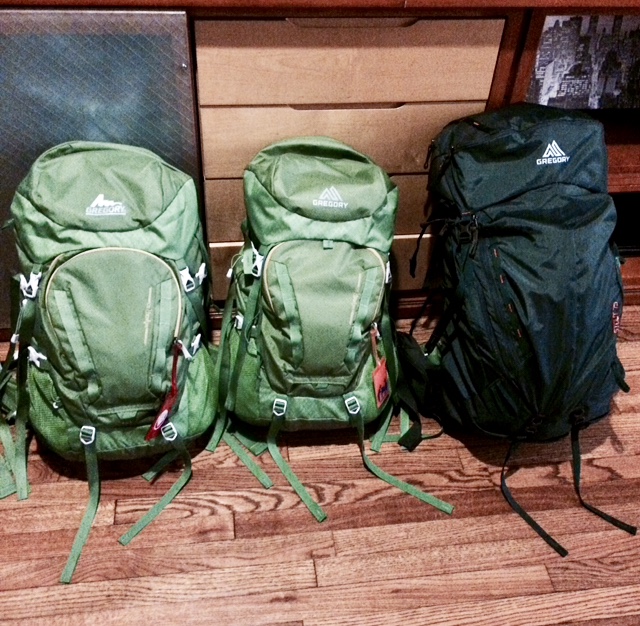
Now that we have the bag squared away, the next most important items are good hiking shoes, waterproof outerwear, and a few good wicking layers. Weather in Patagonia can be very unpredictable. We are going in February (summer in South America) so we expect some sun and warmth. However, February is also known for its brutal winds so temperatures can vary greatly just in the course of a few hours.
Here’s a peek at what will be in our bags working from the inside out:
- Wool socks and Exofficio underwear (quick drying, lightweight, comfortable and odor resistant).
- Base layers – breathable, long sleeve base layers and workout pants make a good first layer. You can add or remove other layers as necessary. For example, I love these Trekkie Hiking Pants from Athleta to wear over my base layer. (These turned out to be all I needed. Workout pants on bottom layer and the hiking pants over them. We had one day of rain and sleet and while rain pants might have helped on that one day, I find them very uncomfortable overall so decided to just get wet.)
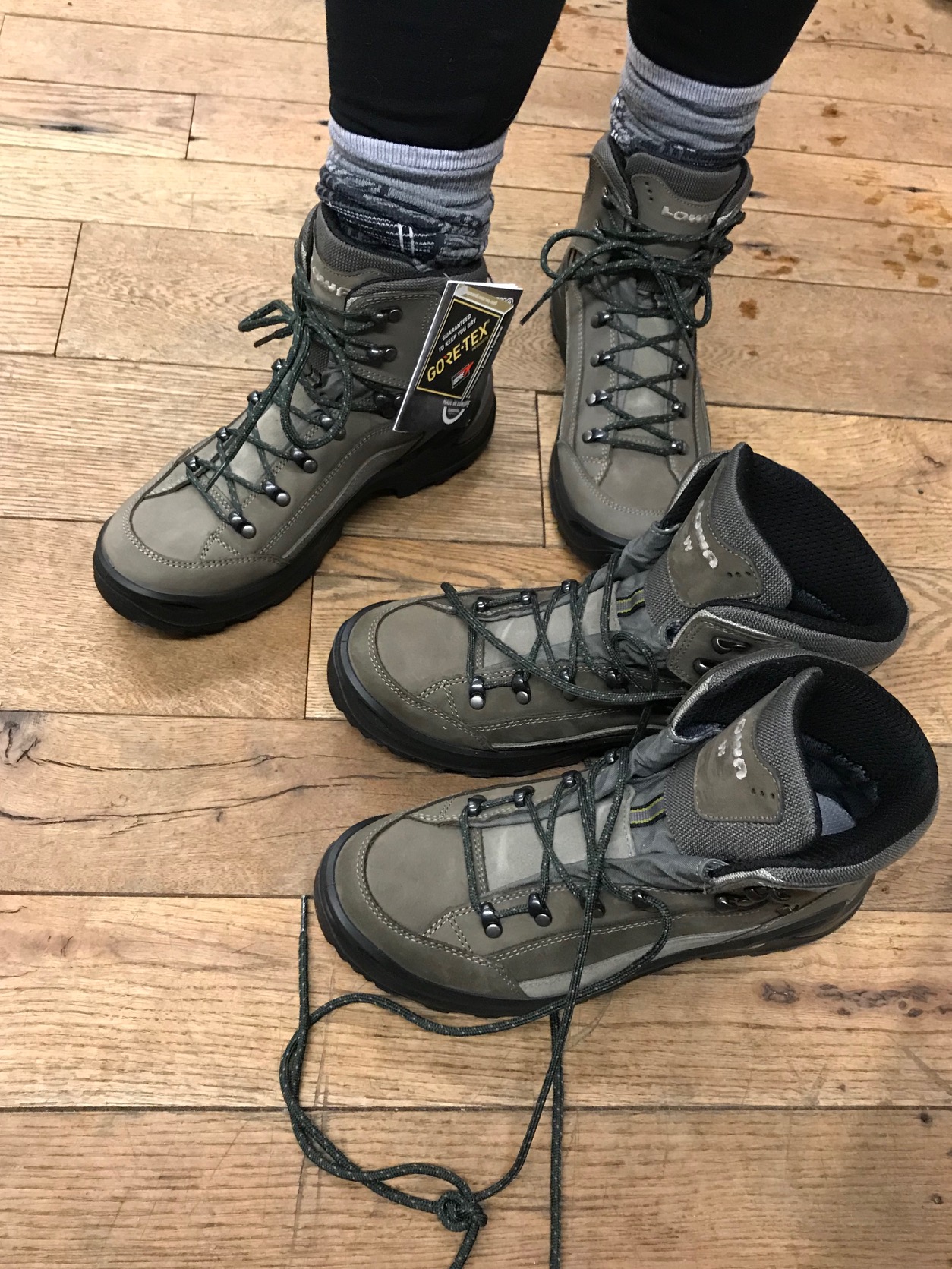
Good hiking boots! These are the most important purchase you will make. I tried on 20 pairs of shoes before I found the pair I liked. In fact, we all quite liked them – 3 of the 4 of us will be wearing the same boots on this trip.
Pro tip: make sure they are snug in the heels and loose in the toes. And wear them a bunch of times before you go! (Be sure and wear them with the socks you plan to wear. One of our party had worn hers beforehand but still got really bad blisters because she wore different socks).
You will also want a comfortable pair of shoes to change into after hiking all day (like Crocs or flip flops). (The best part of my day was putting on crocs at night!)
- A warm fleece and a rain/wind jacket. Winds can get up to 60mph in Patagonia so even if its warm, wind protection is necessary.
- Depending on the time of year, gloves, a beanie and a neck gaiter would be useful. While it is summer there in February, temps still get down to low 40’s and windy at times.
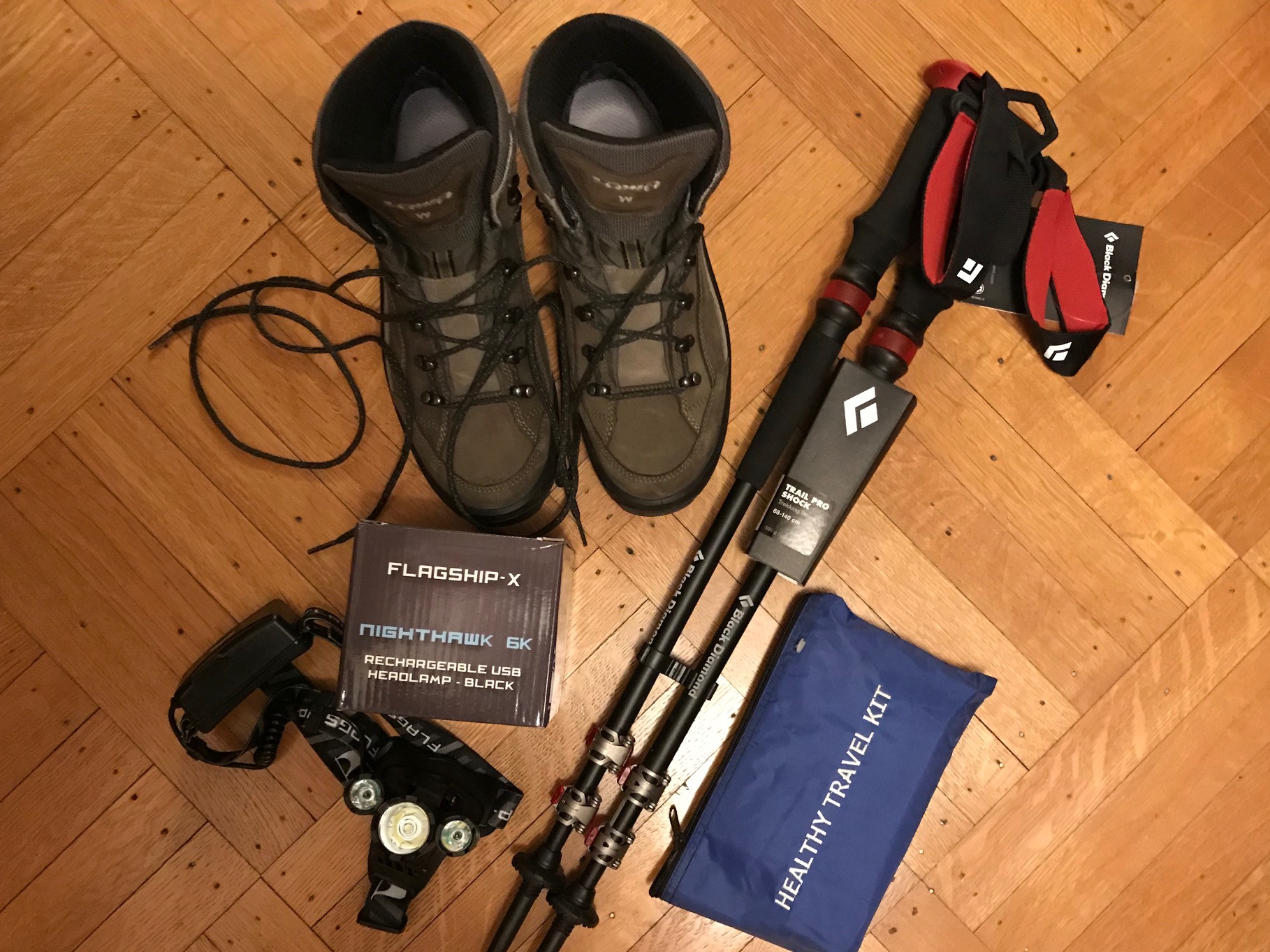
Other accessories include –
- a microfiber, super absorbent and fast drying towel
- a headlamp or a good flashlight
- a sleeping bag liner so you don’t have to worry about bed bugs (this didn’t make the final cut and I didn’t really need it).
- an adapter – Argentina and Chile use 220V which is the same as Europe
- a waterproof pouch for your phone. The weather is unpredictable and this will keep your phone safe and dry.
- a first aid kit with blister pads (moleskin works best – as soon as you feel a hot spot on your feet, stop and put moleskin on!)
- trekking poles (I found trekking poles to be crucial and it was the best thing I could have brought – I only used one though). They are especially useful on the downhill.
- sunscreen and sunglasses
- water bottle
- body wipes (one or two nights we did not have easy access to showers – either because it was too far away from our tent or because lights were already out and we didn’t feel like dealing with it – these wipes came in handy).
- plenty of ziplocs
- steri pen water purifier (not necessary – the water from the glaciers in Patagonia is pure as can be)
- solar charger – (can end up being on the heavy side – I opted for two battery packs instead and they were enough of a charge for my phone on the few occasions I had no access to outlets) Hint: Keep your phone on airplane mode as much as possible and the charge will last longer.
- Motrin or Advil – I took it everyday!
And don’t forget the Trail Mix from Trader Joe’s!
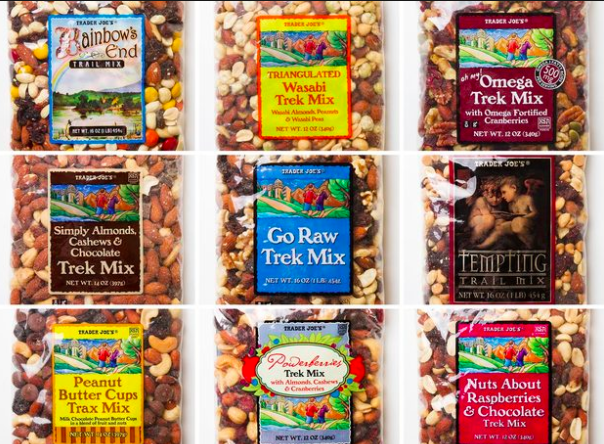
Happy Trekking – let’s go everywhere!
PS – see my post trip Nine Things I Learned in Torres del Paine, Patagonia
*As an Amazon Associate, I earn from qualifying purchases.
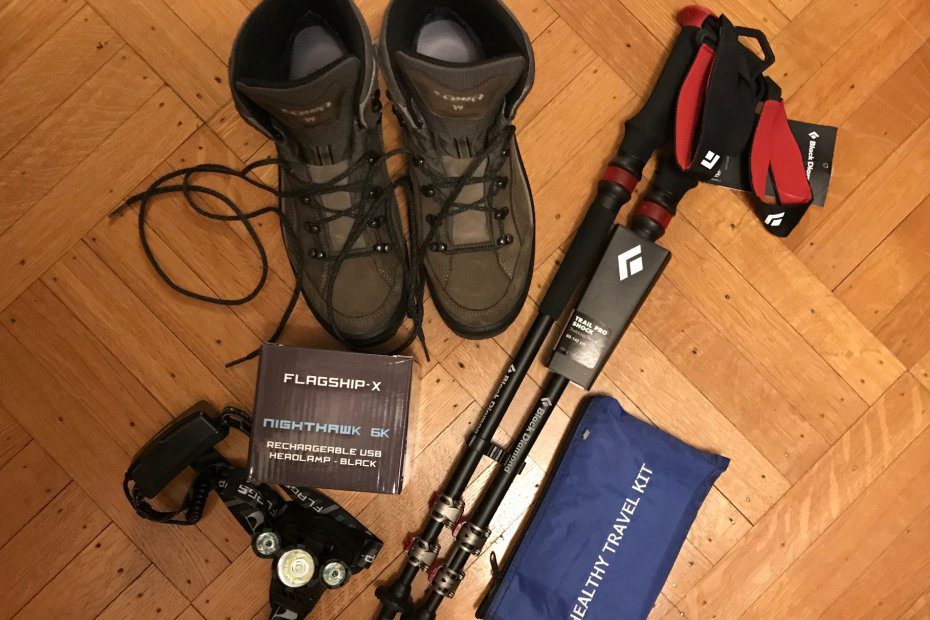
So so so so exciting and love all the gear. Makes me want to hike!
I’m jealous, enjoy I look forward to your posts